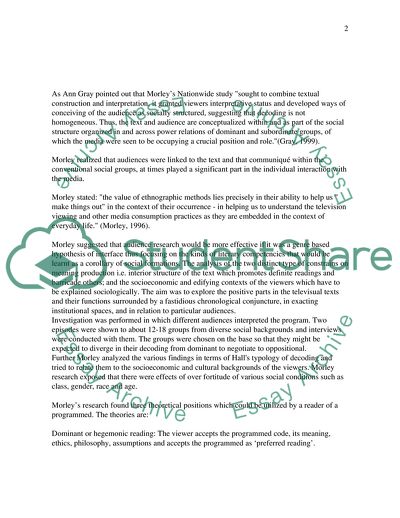Cite this document
(Studying Media Audiences Research Proposal Example | Topics and Well Written Essays - 2294 words, n.d.)
Studying Media Audiences Research Proposal Example | Topics and Well Written Essays - 2294 words. Retrieved from https://studentshare.org/sociology/1705641-by-drawing-on-david-morleys-nationwide-study-explain-the-main-theoretical-perspectives-of-reception-theory
Studying Media Audiences Research Proposal Example | Topics and Well Written Essays - 2294 words. Retrieved from https://studentshare.org/sociology/1705641-by-drawing-on-david-morleys-nationwide-study-explain-the-main-theoretical-perspectives-of-reception-theory
(Studying Media Audiences Research Proposal Example | Topics and Well Written Essays - 2294 Words)
Studying Media Audiences Research Proposal Example | Topics and Well Written Essays - 2294 Words. https://studentshare.org/sociology/1705641-by-drawing-on-david-morleys-nationwide-study-explain-the-main-theoretical-perspectives-of-reception-theory.
Studying Media Audiences Research Proposal Example | Topics and Well Written Essays - 2294 Words. https://studentshare.org/sociology/1705641-by-drawing-on-david-morleys-nationwide-study-explain-the-main-theoretical-perspectives-of-reception-theory.
“Studying Media Audiences Research Proposal Example | Topics and Well Written Essays - 2294 Words”, n.d. https://studentshare.org/sociology/1705641-by-drawing-on-david-morleys-nationwide-study-explain-the-main-theoretical-perspectives-of-reception-theory.


